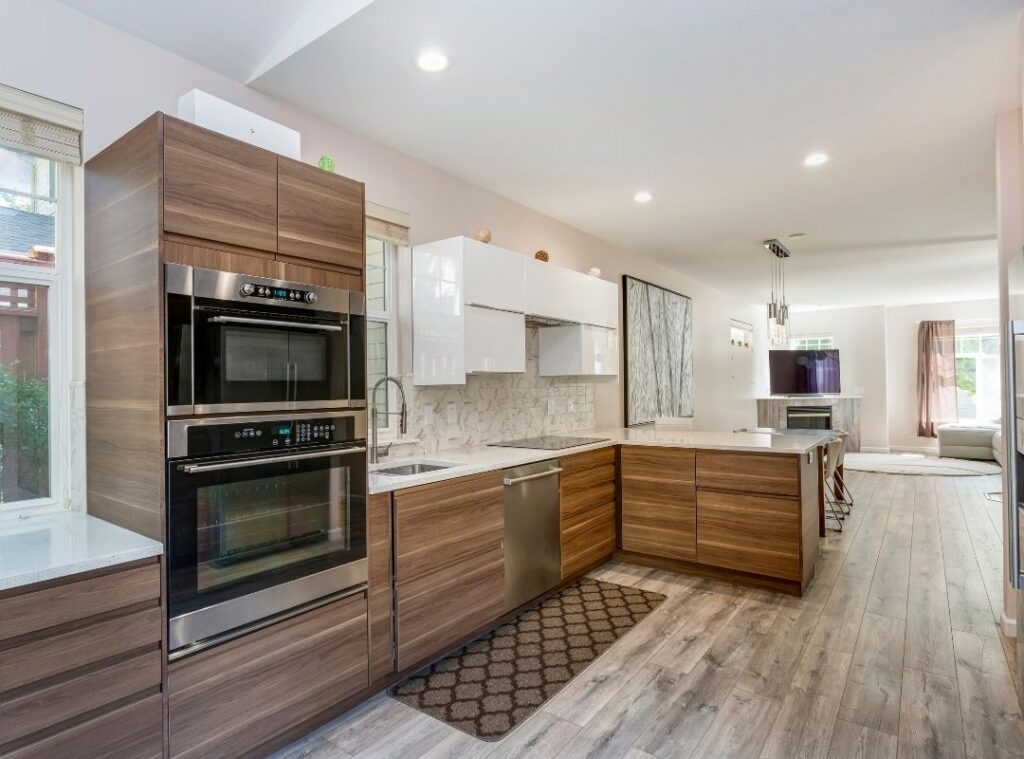Effective Planning for Small Kitchen Spaces
The modern-day kitchen, often described as the heart of a home, epitomizes a place of gathering, comfort, and creativity. However, the dynamics change significantly when space is limited, bringing unique challenges to the functionality and aesthetics of a kitchen. This comprehensive guide delves into practical solutions designed to maximize both efficiency and style in your small kitchen. From savvy storage solutions to strategic design techniques, we will explore ways to transform your compact kitchen into a space that feels more open and inviting.
Understanding Small Kitchen Dynamics
When dealing with a small kitchen, homeowners face several challenges, primarily concerning space management. Restricted countertop spaces, cramped cabinets, and limited room for appliances are just a few issues that can arise. However, these challenges also present opportunities to innovate. By focusing on maximizing utility and enhancing practicality, small kitchens can be just as efficient and stylish as their larger counterparts. The key lies in embracing the compact layout and making strategic decisions to optimize available space.
The goals for remodeling or organizing a small kitchen revolve around enhancing efficiency, maximizing space, and improving accessibility without compromising on style. This process often requires a mix of creativity, strategic planning, and a thorough understanding of one’s needs. It’s about creating an environment where functionality meets inspiration, and every square inch is seen not as a constraint but as an opportunity to innovate.
Effective Space Utilization Strategies
Space utilization tops the list of necessities in small kitchen planning. Smart storage solutions involve using multi-functional cabinets, possibly with built-in dividers or pull-out drawers, to make the most of the cabinet space. Incorporating features like hanging pot racks or magnetic knife strips can free up considerable counter and cabinet space. Meanwhile, optimizing under-sink storage with stackable shelves or roll-out trays can turn this often-overlooked area into a storage powerhouse.
Appliance placement is another critical component of space strategy. Downsized or multi-functional appliances can serve purposes efficiently without taking up unnecessary room. For example, choosing a high-performance convection microwave can eliminate the need for a full-size oven in some cases. Similarly, drawer-style dishwashers or under-the-counter fridges can be excellent space-savers. Integrating appliances into your cabinetry or considering collapsible features ensures a smoother, more open area while maintaining essential functionalities.

Design Techniques for the Illusion of Space
In small kitchens, the choice of color can significantly influence the perception of space. Lighter colors, for instance, can make the kitchen feel airy and open, while bold, dark hues may create a cozy, intimate atmosphere. Using a monochromatic color scheme with different shades of the same color can also enhance the sense of spaciousness. Contrasting textures and strategic pops of color can add depth and character to the space without overwhelming it.
Lighting is a powerful tool in expanding visual space. Well-placed, varied light sources, including pendants, under-cabinet lights, and recessed lighting, can brighten the room, making it appear larger. The interplay of light and shadow can highlight certain areas, draw the eye upward, or create focal points that distract from the limited square footage. Natural light, if accessible through windows or skylights, should be maximized and unobstructed as much as possible to open up the room.
Organizational Practices for Everyday Efficiency
A clutter-free kitchen is a more spacious kitchen, especially when square footage is premium. Systematic decluttering—removing seldom-used gadgets, minimizing dishware, and discarding expired items—can instantly free up space. This practice is not a one-time task but an ongoing process that requires revisiting every few months. The goal is to be intentional about what you store in your kitchen, keeping only what you need and use regularly.
Maintaining tidiness is another essential habit. A place for everything and everything in its place goes a long way in small kitchens. Daily habits, such as cleaning as you go, putting items back immediately after use, and not allowing dishes to pile up, are vital. These practices not only maintain order but also make the kitchen a more pleasant and spacious place to work. The discipline of tidiness might take effort to develop, but the payoff in terms of space and peace of mind is immeasurable.
Custom Solutions and Professional Options
Sometimes, off-the-shelf solutions can’t meet the unique space-saving needs of a small kitchen. This is where custom solutions come into play. Custom cabinetry designed to fit the exact dimensions of your kitchen can be a game-changer. While this option can be more expensive, it ensures every available inch is used efficiently. Pull-out spice racks, built-in dividers for cutlery, or extra-deep drawers for pots and pans can make a significant difference in storage and functionality.
While DIY solutions are cost-effective and satisfying, consulting with a professional organizer or interior designer is an investment with its weight in gold. These experts can provide insights, resources, and planning expertise that the average person might not consider. They have a deep understanding of space utilization, aesthetics, and how to make spaces not just appear larger but function more efficiently. Even if you don’t hire a professional for the entire process, a consultation can provide valuable personalized advice for your specific space.

Real-Life Small Kitchen Success Stories
Nothing is more inspiring than seeing real-life success stories of small kitchen transformations. These case studies often feature clever before-and-after scenarios that highlight the creativity and strategic planning involved in maximizing limited kitchen space. From innovative storage solutions to multifunctional furniture, these stories showcase the potential hidden within the constraints of a small kitchen layout.
These narratives, accompanied by testimonials, reveal the challenges individuals faced and the solutions they devised. Whether it’s a clever use of vertical space, hidden cabinets, or multipurpose fittings, real-life stories resonate because they are relatable and achievable. They teach valuable lessons and provide a springboard for others facing similar space challenges, showing that with a little ingenuity, any small kitchen can be transformed into a functional and stylish space.
Effective planning for small kitchen spaces boils down to a combination of creative storage, strategic design, consistent organization, and sometimes, investment in custom solutions. While small kitchens do present unique challenges, they also offer unique opportunities to innovate and infuse character into your home. These spaces force us to deliberate on every design decision, ensuring that each choice maximizes functionality, efficiency, and comfort.
For those ready to transform their small kitchen into a more practical and welcoming space, professional help is a valuable resource. 7-Day Kitchen specializes in kitchen redesign and renovations, offering solutions tailored to every space’s peculiar challenges. Whether you need custom cabinetry designed to fit snug spaces, or consultations on appliance placement and space maximization, 7-Day Kitchen provides expertise that turns constraints into opportunities for innovation. Start planning your small kitchen transformation today, and contact 7-Day Kitchen to breathe new life into your space.





